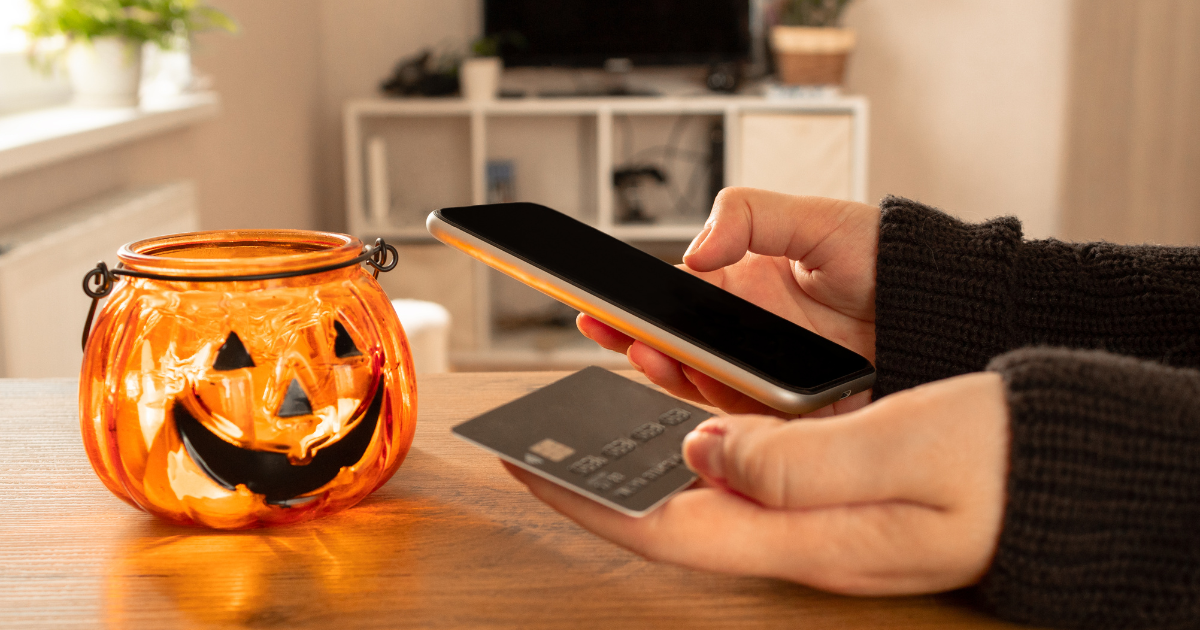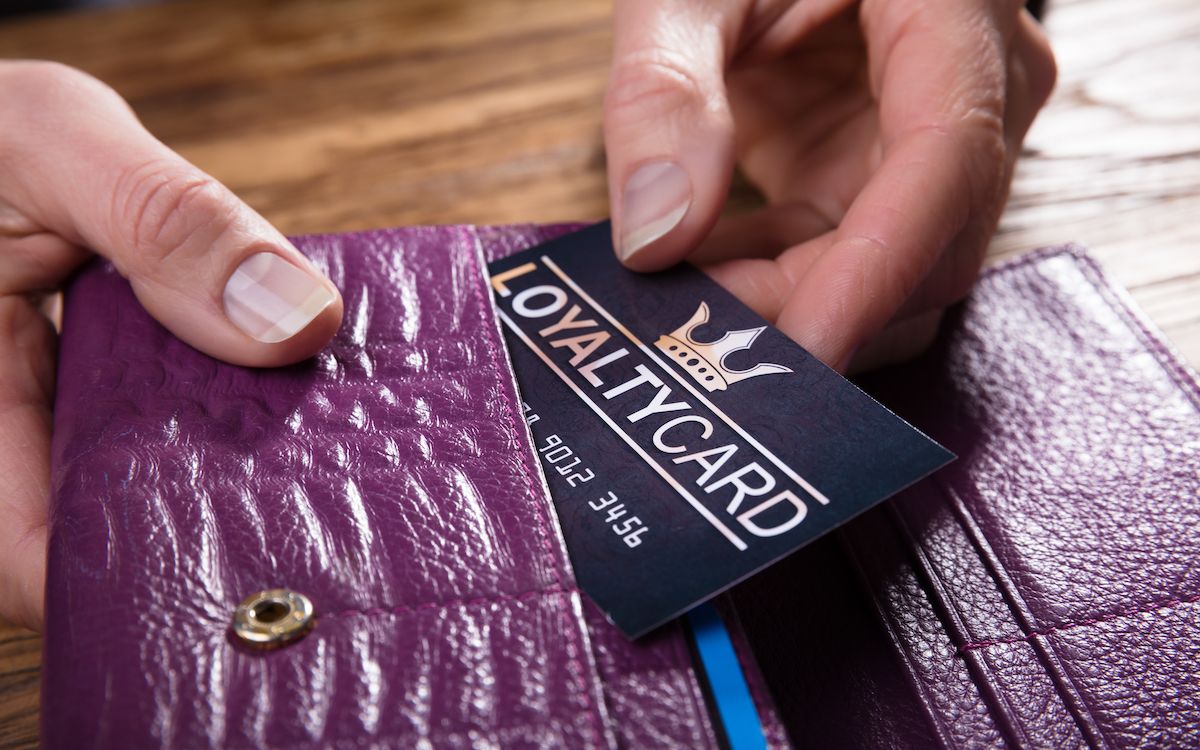
If you're running an ecommerce business, you know that customer loyalty is essential to your success. Keeping your customers coming back is key to maintaining a healthy bottom line, and one of the best ways to do that is to implement a loyalty program.
Loyalty programs are proven effective in retaining customers and encouraging them to spend more. As many as 82% of customers will keep buying from a brand they trust, even if other brands become more popular.
This shows that having compelling content that builds trust with your audience, along with a suitable loyalty program, can make a big difference for your business. Here's everything you need to know about ecommerce loyalty programs, including the various programs to consider and what benefits you can expect.
What Is an Ecommerce Loyalty Program?
Ecommerce loyalty programs are customer retention tools that reward shoppers based on their spending. Knowing how to create customer loyalty through strong service is one thing, but an ecommerce loyalty program is a great way to boost such service and keep your customers coming back.
You can offer various loyalty programs, but the most important thing is that the program is tailored to fit your brand and business goals.
The Benefits of Using an Ecommerce Loyalty Program
Ecommerce loyalty programs provide several benefits for both businesses and customers. Here are five of the most notable advantages.
Increased Customer Retention
The biggest benefit of ecommerce loyalty programs is that they help businesses keep their customers coming back for more. And, since it costs five times as much to acquire a new customer than to retain an existing one, this is a significant advantage.
Improved Customer Lifetime Value
Customer Lifetime Value (CLV) is the total amount of money a customer will spend with your business throughout their relationship with you. An important goal for any business should be increasing its CLV, and ecommerce loyalty programs can help do that.
Greater Customer Engagement
Another benefit of ecommerce loyalty programs is that they can help businesses increase customer engagement. This is important because engaged customers are more likely to make purchases, recommend products to friends, and provide valuable feedback.
Here, it’s worth mentioning that while there are several ways to increase customer engagement, gamification is one of the most effective. Gamification is the process of using game-like elements in non-game contexts to engage and motivate people. It's also a great way to get customers more involved in your loyalty program.
More Brand Advocates
A brand advocate is a customer who promotes your products or services to their friends and family simply because they love it. They're also known as "word-of-mouth" marketers and can be precious to your business.
Since people trust the recommendations of friends and family more than they trust advertising, having more brand advocates is always excellent news.
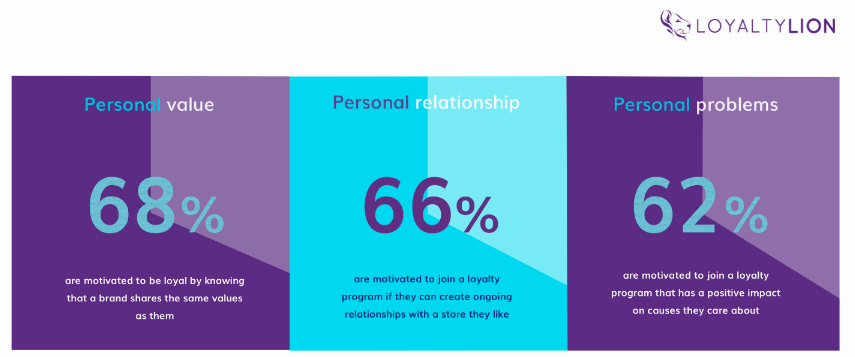
Image source: Loyalty Lion
Types of Ecommerce Loyalty Programs
Let's now consider the various ecommerce loyalty programs you can offer. As you read through the list, consider how you could tailor such programs to fit your brand and business goals.
1. Points Programs
In a points program, customers earn points for every purchase they make. They can then redeem these points for rewards, such as discounts or free shipping.
Points programs are among the most popular ecommerce loyalty programs because they're relatively simple to set up and manage. However, it's essential to ensure that the points customers earn are valuable enough to encourage them to keep coming back.
If it takes a customer years to be able to redeem points for something of value, the appeal of a loyalty program will decrease.
2. Tiered Programs
Tiered programs are similar to points programs, but customers move up to different tiers based on their spending. As they move up the levels, they unlock better rewards.
Tiered programs can be a great way to encourage customers to spend more with your business. Ensuring that these tiers are clearly defined and that the rewards are valuable is key to the success of this program.
3. Rebate Programs
Rebate programs offer customers a percentage of their purchase in the form of a rebate. This type of program can be a great way to encourage customers to make larger purchases.
It's important to note that rebate programs can be complex to set up and manage. You'll need a system for issuing rebates and tracking customer eligibility.
4. Discounts & Coupons
For companies that offer high-ticket items, discounts and coupons may be a more effective way to encourage customer loyalty. Customers are more likely to purchase from one company over another if they feel they're getting a good deal with the first company.
For example, a company that offers school lockers may want to provide a coupon for 10% off a purchase of $500 or more. This would encourage customers to buy more lockers at once, increasing the company's CLV. Compared to a company that doesn’t offer any discounts, it’s clear why someone would choose the first company over the second.
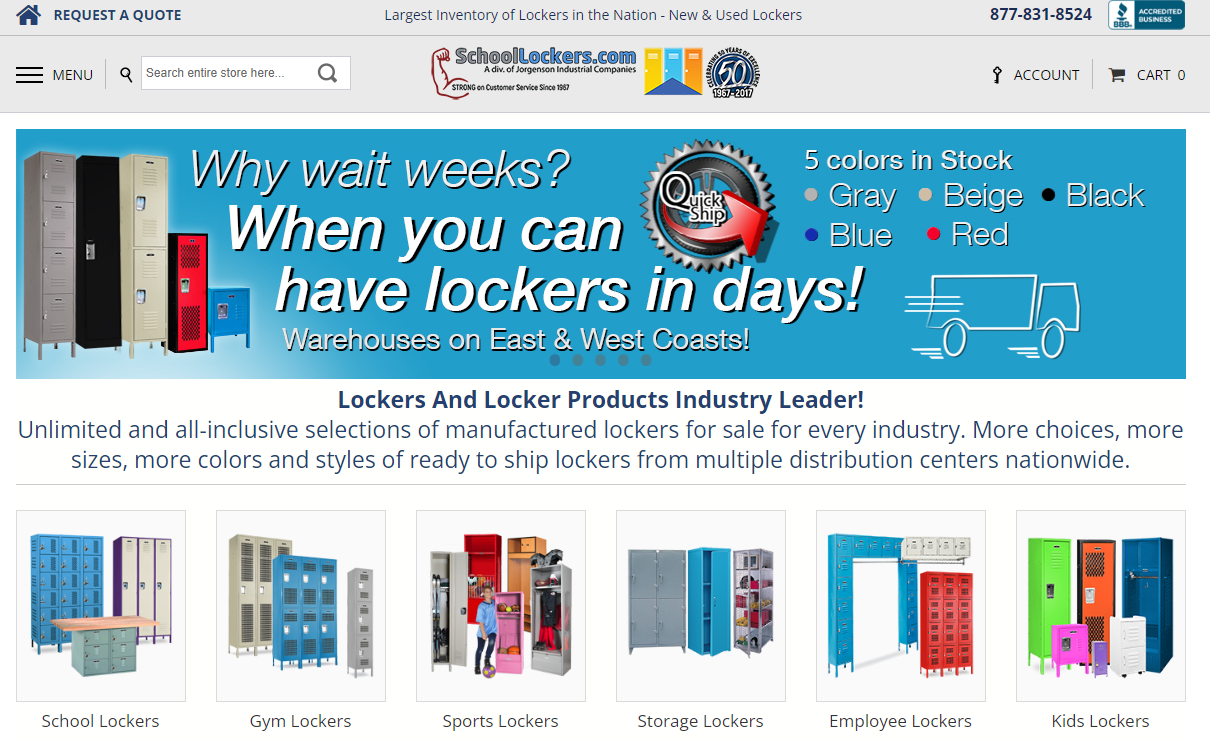
Image source: SchoolLockers.com
5. Exclusive Access
Exclusive access is another type of loyalty program that can be effective for companies selling high-ticket items. This program gives customers who spend a certain amount with the company access to particular products or services that others cannot receive.
For example, a luxury car company may offer exclusive test drives to customers who spend $100,000 or more with the company over a set period. This would incentivize these customers to keep spending with the company to maintain their exclusive access. Another company that offers people searching functionality through their website may provide complete access to certain content for customers who sign up for a yearly paid subscription as opposed to a monthly one.

Image source: TruthFinder
6. Personalized Service
Personalized service is another kind of loyalty program you might want to consider. For example, a company that specializes in selling luxury handbags may offer its top customers handbags with their first names engraved on the products. This type of program can create a sense of exclusivity and make customers feel appreciated.
As another example, a company that helps customers build their resumés may offer a loyalty program that gives its best customers a free one-on-one consultation with a top career coach. This would be useful in various situations—consider someone who is trying to build a resumé for a retail sales associate and wants to differentiate themselves from others applying for the same position. By providing such a personalized, one-to-one service, the company can show that it is genuinely interested in helping its customers succeed.
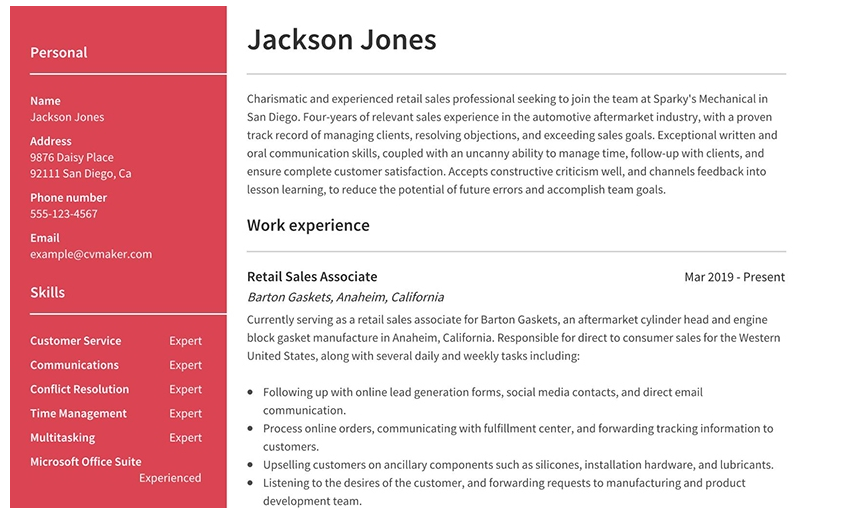
Image source: CV Maker
7. Recognition & Status Programs
Recognition and status are two other essential elements of loyalty programs and can, in fact, stand by themselves. In recognition programs, customers are recognized for their loyalty in a public way. For example, a company may announce the names of its top customers on its website or social media pages.
Status programs could also involve giving customers special privileges that are not available to non-customers. This could include early access to new products, invitations to special events, or even something as simple as (if it makes sense for the type of business in question) a free cup of coffee each time they visit the store.
Both recognition and status programs can make customers feel appreciated and valued, encouraging them to continue doing business with the company.
Tips for Maximizing Your Ecommerce Loyalty Program
Now that you know all about ecommerce loyalty programs, here are a few tips to help you get the most out of yours:
- Make sure your program is easy to understand and use. Customers should be able to sign up for the program and start earning rewards quickly and easily without experiencing a learning curve.
- Pro tip: Create infographics to help spread the word about your loyalty program. Infographics are versatile: you can share them via email, publish them on social media, or even embed them on your website.
- Be clear about what benefits customers will receive. Customers should know exactly what they'll get for being loyal to your company.
- Offer a mix of both immediate and long-term rewards. Immediate rewards (such as discounts or free shipping) will help keep customers engaged, while long-term rewards (such as VIP access or exclusive products) will keep them coming back.
- Pay attention to your customer's feedback. Use it to make changes and improve your program over time. Surveys and tests like the net promoter score can help you gauge customer satisfaction with your loyalty program.
- Constantly be testing and trying new things. What works today may not work tomorrow, so it's essential to always be experimenting with your loyalty program to see what gets the best results.
In Conclusion
Ecommerce loyalty programs can be a great way to encourage customers to keep coming back to your business. But before you launch a program, it's important to understand what type of program will work best for your business and your customers.
By using the tips in this article, you’ll be able to create a loyalty program that will help you build long-lasting relationships with your customers.






